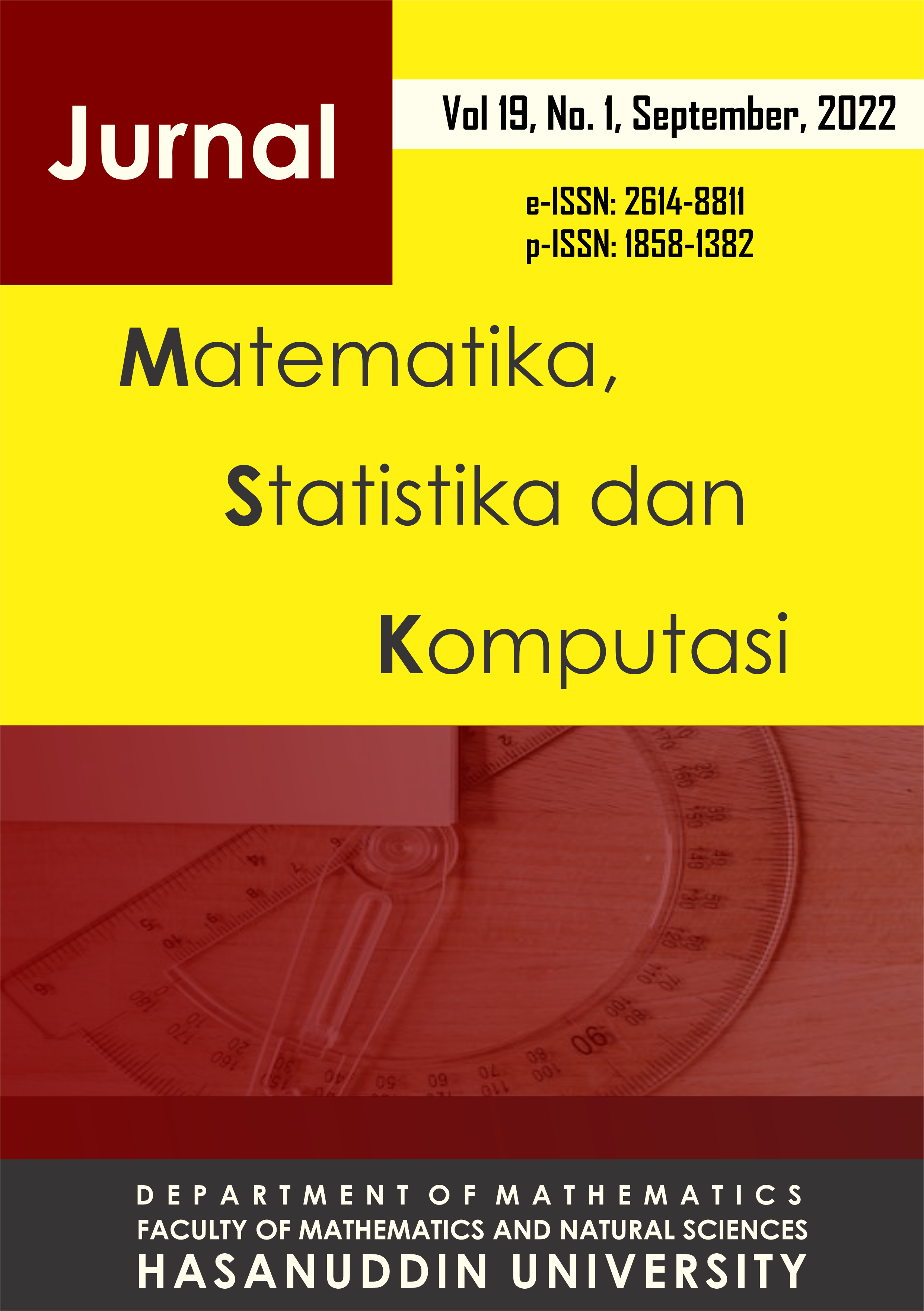Comparison of Variance Covariance and Historical Simulation Methods to Calculate Value At Risk on Banking Stock Portfolio
DOI:
https://doi.org/10.20956/j.v19i1.21436Keywords:
Value at Risk, Variance Covariance, Historical Simulation, Backtesting, Banking Stock PortfolioAbstract
In investing, all investors must be faced with risk that must be borne. Therefore, to determine the best strategy in investing, every investor must calculate the risk. One statistical approach that can be used to measure the risk is Value at Risk (VaR). VaR is defined as a tolerable loss with a certain level of confidence. The purpose of this research is to estimate VaR using Variance Covariance and Historical Simulation methods on banking stock portfolio consisting of three stocks for the period 11 September 2020-30 September 2021. Both methods will then be evaluated using backtesting to determine the accuracy of VaR and to obtain the best method. From the research results, if the holding period is 1 day, then the VaR calculation for banking stock portfolio using both methods can be used to estimate the risk at 99% and 95% confidence levels, except for the VaR value using the Variance Covariance method for banking stock portfolio at 95% confidence level. The results show that Variance Covariance method is the best method for 99% confidence level. As for the 95% confidence level, Historical Simulation method is the best method.
References
Asyatun I., 2016. Analisis Resiko Portofolio dengan Metode Value at Risk (Var) Melalui Pendekatan Historical Method [Unpublished Thesis]. Brawijaya University
R Pangestika et al., 2021. Application of Credible Value at Risk in Predicting Indonesia’s Stock Market Return. J.Phys: Conf. Ser. 175 012028
Irsan, M Y T., Sirait, M L., 2020. Value at Risk (VaR) & Tailed Value at Risk (TVaR): Companies Listed in LQ45. International Jurnal of Economics, Commerce and Management, Vol.VIII, Issue 12, 560-568
Wang Yuling, et al., 2022. Comparison and Forecasting of VaR Models for Measuring Financial Risk: Evidence from China. Hindawi Discrete Dynamics in Nature and Society, Vol. 2022, Ariticle ID 5510721
Dowd, K., 2005. Measuring Market Risk, 2nd Edition. England: John Wiley & Sons, Ltd.
Jorion, P., (2007). Value at Risk: The New Benchmark for Managing Financial Risk, 3rd Edition. United States of America: McGraw-Hill Companies Inc.
Indeks Saham. (2021, October 19). In IDX Channel. https://www.idx.co.id/produk/indeks/.
Pranata, C. D. Asing Borong 3 Saham Bank Himbara & Lepas BFIN-HRUM. CNBC Indonesia. https://www.cnbcindonesia.com/market/20210804160222-17-266119/asing-borong-3-saham-bank-himbara-lepas-bfin-hrum. [4 Agustus 2021]
Tandelilin, E., 2001. Analisis Investasi dan Manajemen Portofolio, Edisi Pertama. Yogyakarta: BPFE
Ihsan, I. F., 2012. Value at Risk Menggunakan Metode Variance Covariance [Unpublished Thesis]. Sebelas Maret University.
Sukiyanto, S. S. U., 2011. Penentuan Nilai Risko (Value at Risk) Portofolio Optimum Saham LQ45 dengan Pendekatan EWMA [Unpublished Thesis]. UIN Syarif Hidayatullah.
Bukit, G. C., 2021. Analisis Backtesting dan Value at Risk (VaR) dengan Metode Simulasi Historis dalam Sub Sektor Bank. E-Proceeding of Management, Vol.8 (2), 772-778.
Giriningtyas, T. D., Dharma, R. S., & Simatupang, B. M., 2015. Penerapan Model VaR dalam Pengukuran Risiko Penurunan Operational Revenue pada Industri Telekomunikasi. Jurnal Ekonomi, Manajemen, dan Perbankan, Vol.1 (2), 1-15.
Firjayanti, A. R., 2016. Analisis Risiko Transaksi Pasar dengan Metode Varian-Kovarian pada Perbankan [Unpublished Thesis]. UIN Alauddin.
Fatouros, G., Makridis, G., Kotios, D. et al., 2022. DeepVaR: a framework for portfolio risk assessment leveraging probabilistic deep neural networks. Digit Finance, https://doi.org/10.1007/s42521-022-00050-0
Wicaksono, B. H., Wilandari, Y., & Rusgiyono, A., 2014. Perbandingan Metode Variance Covariance dan Historical Simulation untuk Mengukur Risiko Investasi Reksa Dana. Jurnal Gaussian, Vol.3 (4),585-594
Downloads
Published
How to Cite
Issue
Section
License
Copyright (c) 2022 Author and publisher

This work is licensed under a Creative Commons Attribution 4.0 International License.

This work is licensed under a Creative Commons Attribution 4.0 International License.
Jurnal Matematika, Statistika dan Komputasi is an Open Access journal, all articles are distributed under the terms of the Creative Commons Attribution License, allowing third parties to copy and redistribute the material in any medium or format, transform, and build upon the material, provided the original work is properly cited and states its license. This license allows authors and readers to use all articles, data sets, graphics and appendices in data mining applications, search engines, web sites, blogs and other platforms by providing appropriate reference.







